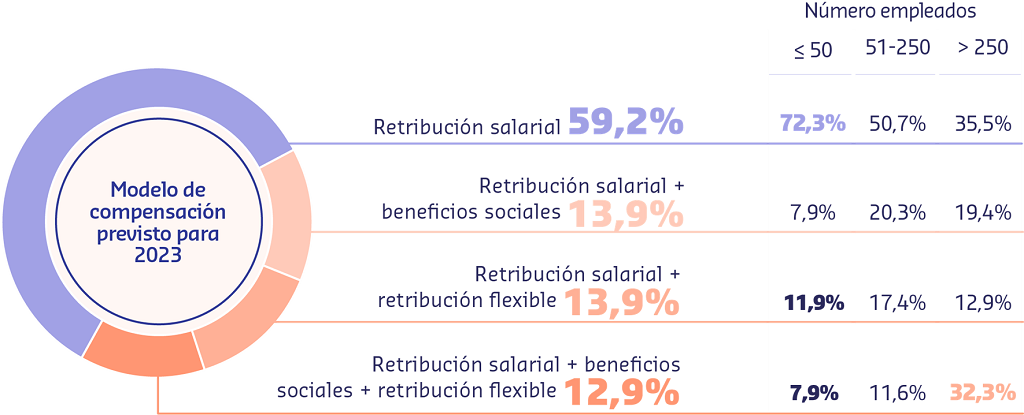
According to the 2023 HR Trends study prepared by Sodexo Benefits and Incentives, only 20% of SMEs with fewer than 50 employees offers flexible compensation plans to its employees. However, in companies with more than 250 employees the percentage increases to 52%.
What can SMEs do to avoid being left behind? What are the barriers when incorporating this remuneration modality?
Associated with the economic context of inflation, salary increases have become one of the main concerns of human resources departments in companies of all sizes. This situation paints a scenario of difficulty when it comes to covering the loss of purchasing power of employees by companies of all sizes, also in the case of SMEs.
This panorama is added to the general situation of discontent of employees with their remuneration. So that, 6 out of 10 workers consider that their current salary does not meet their expectations, according to the aforementioned study of Trends in Human Resources 2023 prepared by Sodexo.
Flexible remuneration, a scenario to explore for SMEs
Given the difficulty that many companies encounter in order to increase the salary of their employees, there are solutions that do not imply an additional expense for the company and that, nevertheless, allow workers to increase their savings. This is the case of Flexible Remuneration.
This type of remuneration offers advantages to both the company and the employee, who can allocate up to 30% of their gross annual salary to services exempt from Personal Income Tax such as food assistance, childcare checks, or transportation to work. Thus, by not paying taxes for that salary percentage, workers can have a higher net salary with which to meet their day-to-day expenses. And at the same time, the company does not incur additional salary expenses.
This remuneration modality is an area of pending work, especially in small and medium-sized companies. According to the aforementioned Sodexo study, 72% of companies with less than 50 employees offer a pure salary compensation model. And, specifically, less than 20% offer flexible remuneration.

However, companies that offer this type of remuneration are satisfied with the resultsin such a way that 60% of the companies that currently offer flexible remuneration plan to work in this line to improve or expand it in 2023.
Benefit plans, a retention lever for employees
Spanish workers point out that companies that offer social benefits are “more attractive than those that do not have them” and “manage to improve their value proposition for the employee”, continues the Trends report.
For For employees who currently do not receive benefits, the most desired concepts are the restaurant card, health insurance and flexible hours. On the other hand, those who already receive some type of benefit would like to be able to receive others such as contributions to a pension plan, retirement insurance or physical or nutritional well-being services.
These benefits are compatible in many cases with the flexible remuneration modality, so putting them into operation in the company is an inexpensive task in terms of investment and with a great improvement in the perception by the employee, also in the commitment to the company.
Main barriers for SMEs
There is still a certain lack of knowledge about how flexible remuneration works, and it is more accentuated in small and medium-sized companies. On the other hand, there is a tendency to think that smaller companies or certain sectors have a more difficult time addressing welfare plans, implementing flexible remuneration policies due to a lack of economic or management resources.
Far from that belief, Flexible remuneration models can be adapted to all sizes and sectors of the company, hardly adding an administrative burden, and for this reason they are also a very successful option for SMEs.
Sodexo has the necessary resources to advise each company on the plan that really suits their situation. It is the company that decides what services it offers, being able to personalize and adapt them to the various groups of employees, without complicated management processes.



